Blue Marlin Dreams
The Ultimate Thrill at the Ultimate Place, by Will Drost
Los Sueños translates to “the dreams” in English. And for me, the last seven years fishing the calm Pacific seas over the Costa Rican seamounts have been exactly that, a dream. And I think most anglers out there would agree! This is a place where you have mornings of double-digit bites, and afternoons of triple-headers being commonplace. And to clarify, I’m talking about blue marlin, not sailfish.
In the first few years of fishing out here I would skip dead bait, tease fish, troll lures, mix the two, and also pull live bait. But as I’ve honed my skills, I’ve found that I’ve taken to scaling down my tackle and really focusing in on one method in targeting these fish – the bait-and-switch.
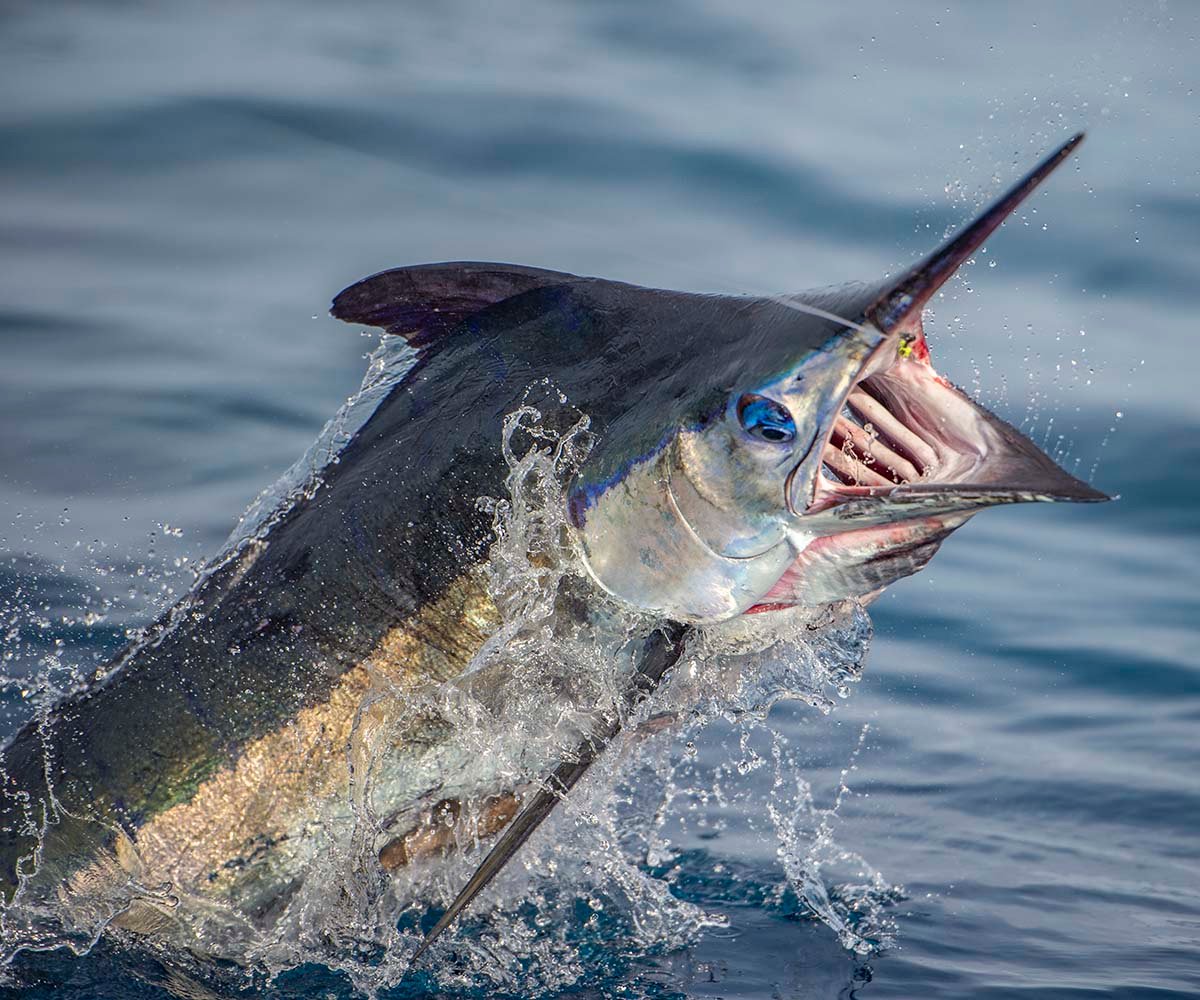
Costa Rica often provides calm seas and multiple shots at blue marlin each day.
Using this method, where the angler drops back a dead bait to a fish raised on a hookless teaser, in my opinion is the ultimate thrill in blue water angling, no matter the species. Doing so on aggressive blue marlin throughout the day, and many times with double or triples in the spread at the same time, is once again, the thing of every big game angler’s dreams. On one of our last trips in 2020 we had six doubles in a row, even having two marlin on one teaser!
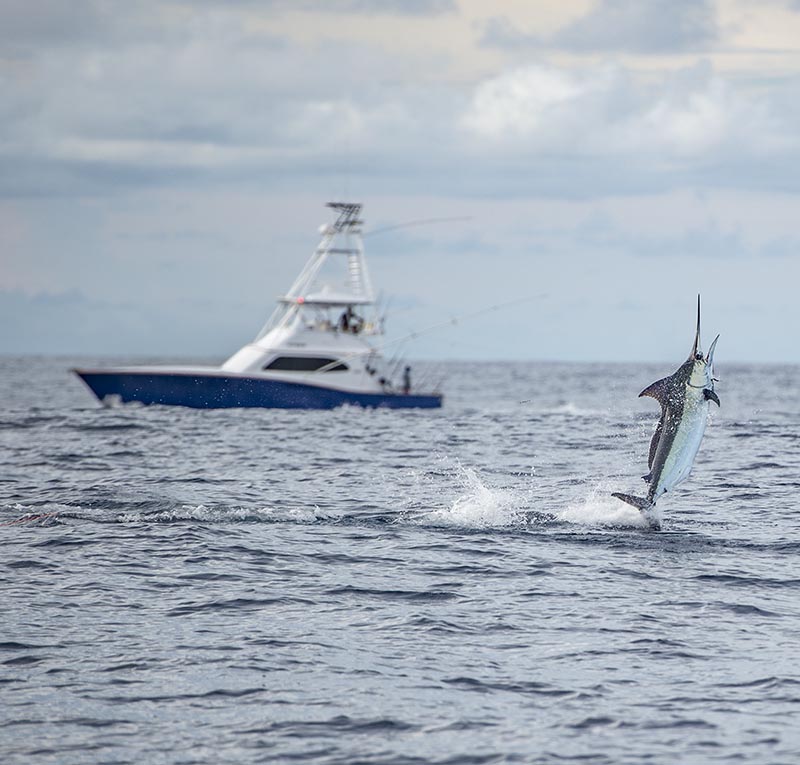
A hooked-up blue marlin takes flight behind the Open Fly, a 50' custom build made by Maverick Yachts of Costa Rica.
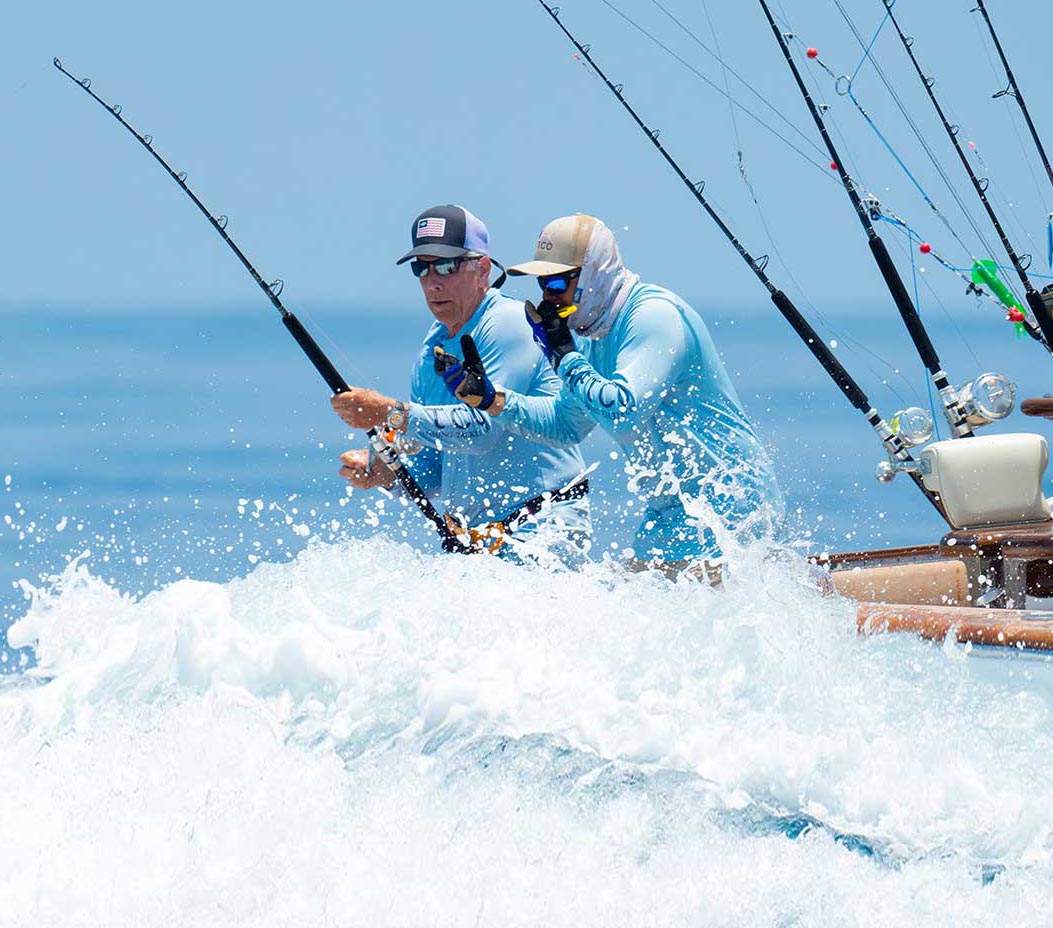
There are many different techniques such as pulling the pitch baits in the water just short of the teasers, but we have found that it is more fun with light tackle when you sight a fish in the spread and pitch the pre-rigged baits from the cockpit.
In this article, I’ll cover what has worked for us over the years, as well as some of my proven techniques. We’ll also hear from some other prominent bait-and-switch aficionados from around the world, who chime in with their tips on this most exciting type of fishing.

Tackle

In our daily charter operation at Maverick sport fishing we rely on our workhorse Alutecnos 50 wide reels for yellowfin and marlin and the Veloce 20s for sailfish - all on matching Alutecnos rods. All of our boats have either custom Release fighting chairs or Maverick Yachts Costa Rica “battle seats.” However, for some of our customers and on my personal trips, we replace the chair with a simple rocket launcher to open up the cockpit and exchange our 50s for our 20 Alutecnos Veloces. Typically we spool a 400 yard top shot of 50-pound mono and attach it to 500 yards of Spectra 80-pound backing. Coupled with a 200-pound wind-on leader and an 11/0 circle hook bridled to a bonito, you are ready to roll.
Spreads and Tactics
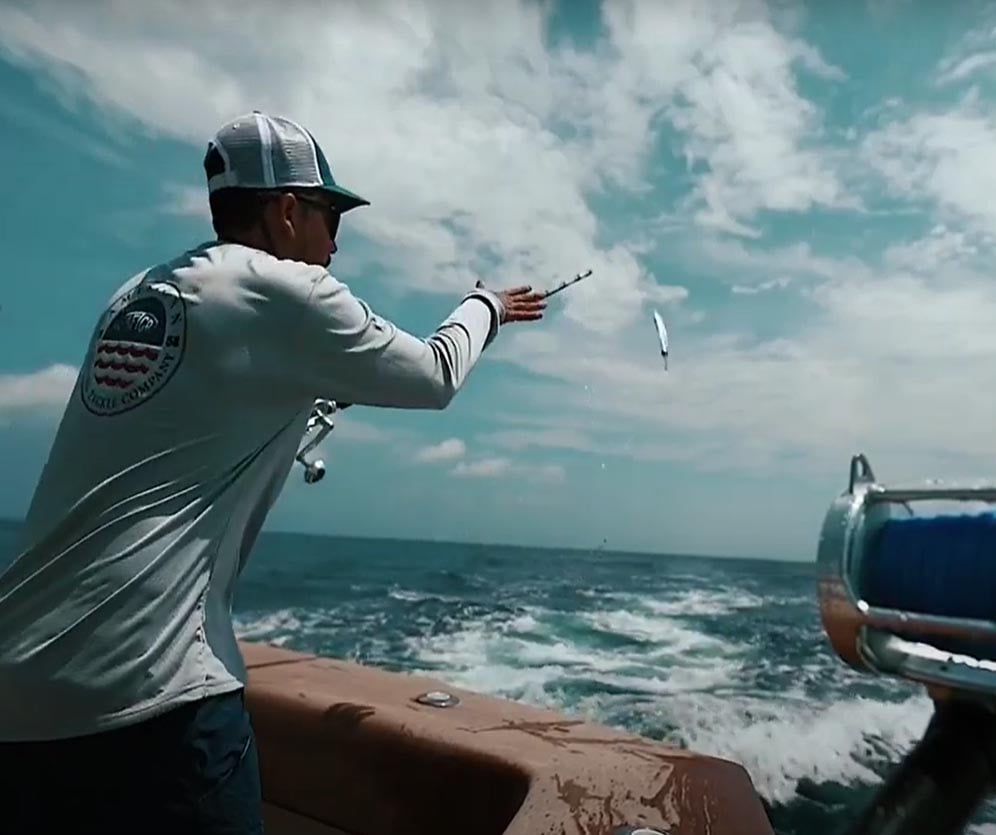
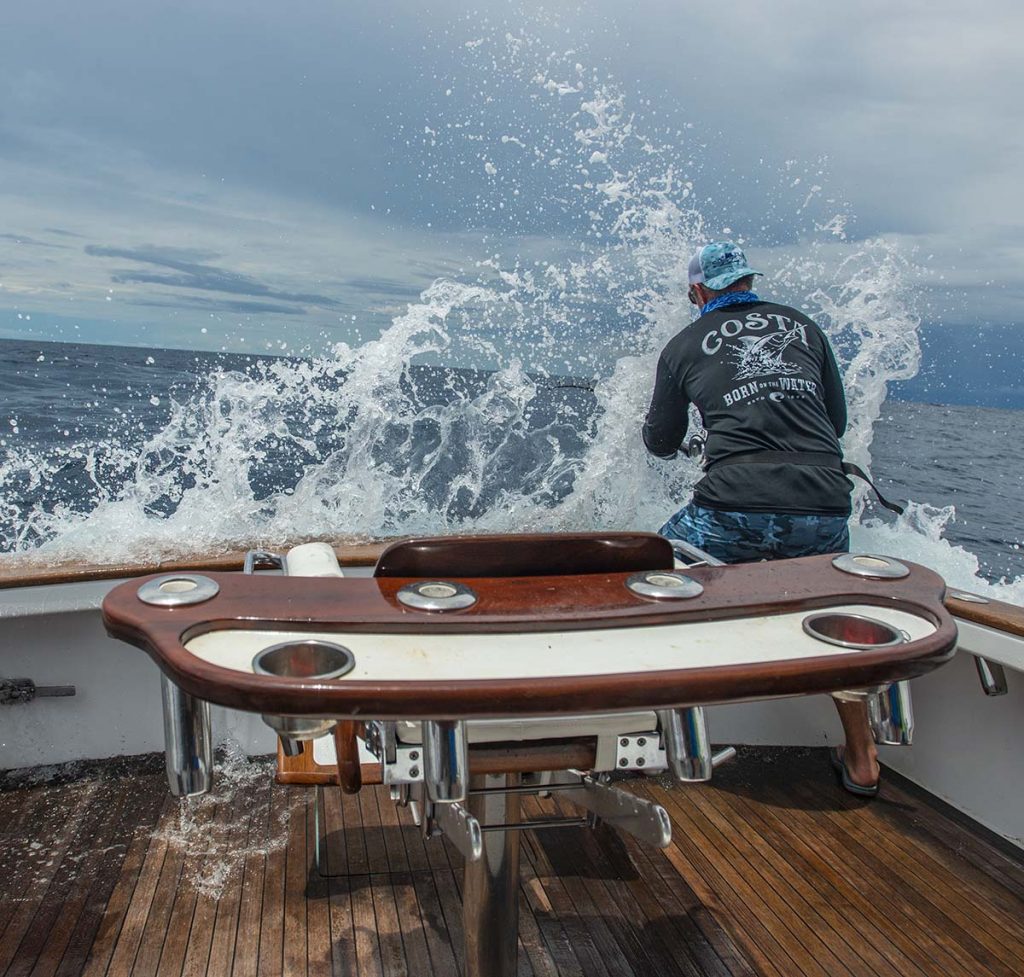
The blue marlin we encounter on the seamounts commonly range in size from 200-300 pounds, and fishing with tackle over 50-pound takes away from the fun of the fight, for me anyway. Fishing for them is a team effort, and our captains and mates release thousands of billfish annually. The key is the angler’s timing, the skill of mates when the fish is boatside, and a captain’s experience at the helm. Getting on these fish fast by backing down with the boat make for safer releases and fewer sore forearms!
Our typical spread is short and long teasers, pulled on both the port and starboard side. We troll at various speeds depending on conditions and the bite, but usually around eight knots. When a fish is spotted on a teaser, the first priority is to get the pitch-bait into the water and back to the teaser as quick as possible. Most of the time the “pitch” is really a “throw.”

The rod tip should be elevated just enough to keep the bait at the surface or skipping on the surface.
Once the bait is positioned, you want to hold the rod tip up and out to one side of the boat with thumb on the spool and the reel in free-spool. The rod tip should be elevated just enough to keep the bait at the surface. When I began fishing out here I tried to keep the bait from skipping but have now found a skipping bait usually drives the fish crazy. Once the teaser passes the pitch-bait, the crew will pull the teaser out of the water and get it to the boat as quickly as possible so that the fish sees only the bait left in place.
When the fish eats, go into free-spool with the line falling off the rod tip and only the slightest thumb pressure. Slight thumb-pressure is very important. If the fish feels resistance, it might spit the bait. A marlin will use its mouth to make sure it kills its prey. This might create the dreaded “sancocho” (missed fish). The drop-back should be a five second count, and then engage the drag, pointing the rod at the fish, and begin to wind slowly so that the circle hook will come to the corner of the fish’s mouth.
Once the fish starts to pull drag slowly raise the rod tip and do not jerk the rod up whatsoever. This is a very important piece of advice because I have seen many anglers jerk on the rod and/or wind fast, resulting in the circle hook missing the corner of the fish’s mouth. If the fish starts jumping before the five-second count, immediately push the drag up and wind. If the fish accelerates and the reel starts to backlash, push the drag up and wind. If it is your first time and the reel backlashes don’t worry. I’ve seen our captains do amazing things with backlashes. We once went in reverse for at least a mile chasing a jumping blue – never getting to the knot in the backlash but still getting the release on the fish!
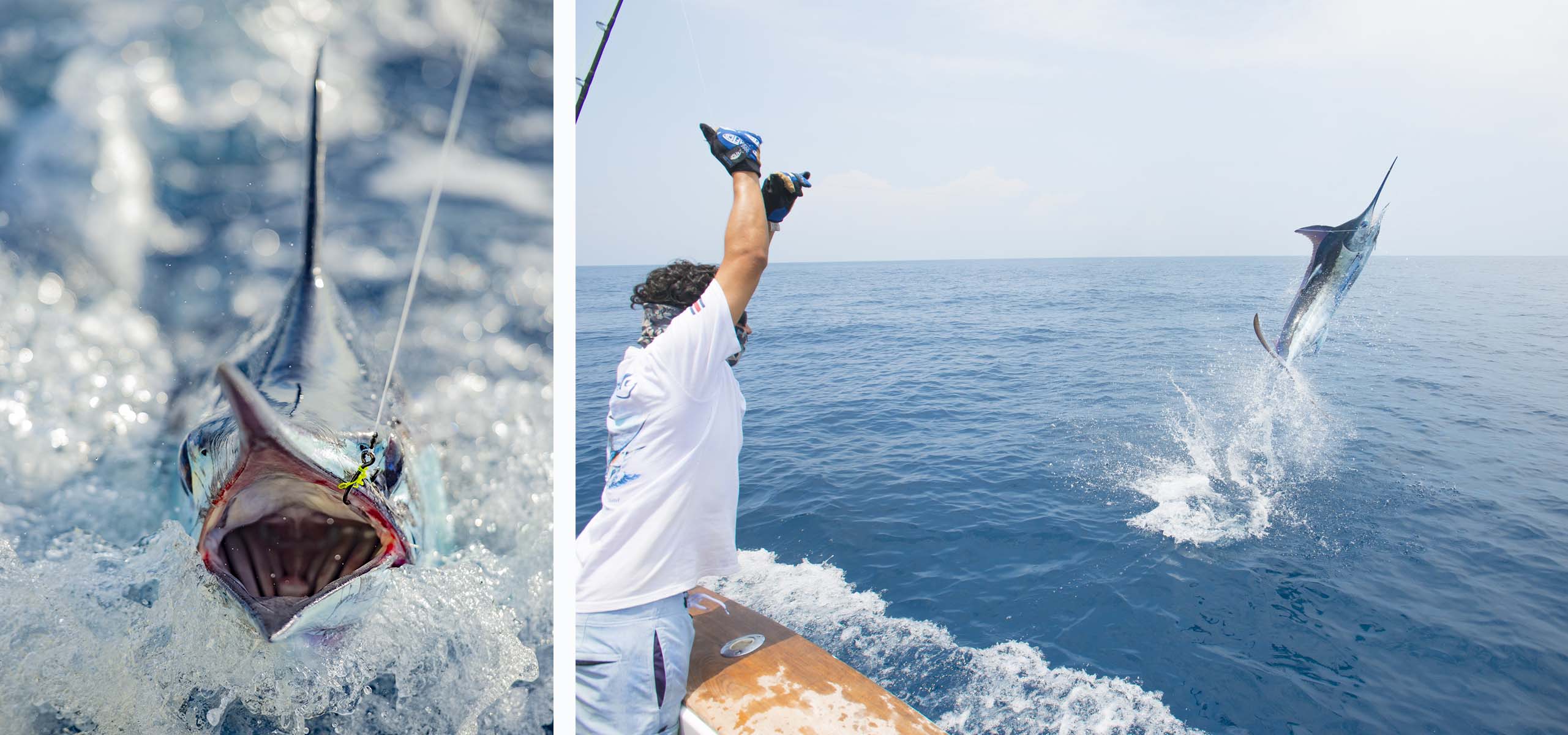
The dreaded "sancocho" or missed fish can be frustrating but understanding the technique for proper hook up mentioned by the author can help reduce them.

In my opinion, Los Sueños Resort and Marina is one of the greatest marinas in the world. It has upper level amenities and the marlin fishery just offshore is pure paradise. Whatever it is; reality, dream, or just some sort of blue water blur, every pelagic angler must experience this incredible fishery and technique for blue water fishing at least once in their lives.
Tips from the Switch-Bait Pros
 Skip Smith – IGFA Legendary Captain Committee Chairman
Skip Smith – IGFA Legendary Captain Committee Chairman
Pass On Electric Teaser Reels
These days, most crews are using electric reels for their teasers, and with their slower rate of retrieve, the fish follows the teaser all the way to the boat. Switch-baiting has turned into what I now call “push and follow.” This can be avoided by using manual teasers which have a higher rate of retrieve. You can tell the top captains who hand-line the bridge teaser because they have scars on their hands from trying to yank away a teaser from a blue marlin and the fish rips it out of their hands — 300-pound mono leaves a burn mark across the back of your hand — but they make the switch and get the job done.
 Matthias Henningson
Matthias Henningson
Bluewater Fishing
Pitch a Big Flyer
My favorite pitch bait if you can find them is a large flying fish combined with a medium-sized super chugger. Flying fish used as a pitch bait is exceptionally tough and will last longer than many other baits and when combined with the chugger forces it stay upright in choppy water. The combination makes it easy for a blue marlin to engulf. Also, if at all possible, try to keep the pitch bait on the hollow side of the wave or the bottom of the wave, and not the top of the wave. This allows you to better see the fish approaching the pitch bait.
 Fly Navarro
Fly Navarro
Fly Zone Outdoors
Check your Leader Size
One of the most important factors in reducing the pressure on the blue marlin is to look at the size of your leader. I always try to use 150- to 200-pound-test, that’s it. Also don’t overlook the importance of a soft leader: A blue marlin will not feel a soft leader nearly as much after it has eaten the bait. I’m really not concerned about the need to use fluorocarbon, especially because we are pitching to an aggressive fish that we’ve just pulled off one of the teasers.
 Tim Richardson
Tim Richardson
traditioncharters.com
Get the Bait Right
In the Dominican Republic with blue marlin, I’ve found taking the time to catch the little bonitos next to FADs for bait is more productive than fishing smaller ballyhoo. The blues simply strike bonitos harder, and the mass of a bonito slides down the gullet of a billfish much easier underwater than a lightweight ballyhoo. Try to find that clean window of water. Keep the bait out of the white water, and in nice clean water, far enough away from the transom to allow the room to work the teaser back to the boat. There is a “sweet spot” not too far and not too close to the transom to position the bait depending on the conditions and where the teaser and the fish are.
About the Author Will Drost
Will Drost of Maverick Sportfishing first visited Los Sueños years ago for an eye-opening experience that led him to pursue a dream of establishing one of the finest sport fishing operations in the world. His first step towards turning his dreams into reality was building a fleet alongside the original Maverick yacht, Spanish Fly. After Sea Fly was acquired, he has gone on to build what is now an eleven-boat fleet of custom sport fishers all crewed by many of Costa Rica’s finest captains, mates, and staff. Drost is also an avid photographer and conservationist working with numerous nonprofits including the Coastal Conservation Commission and the IGFA.
